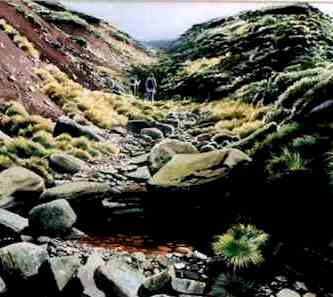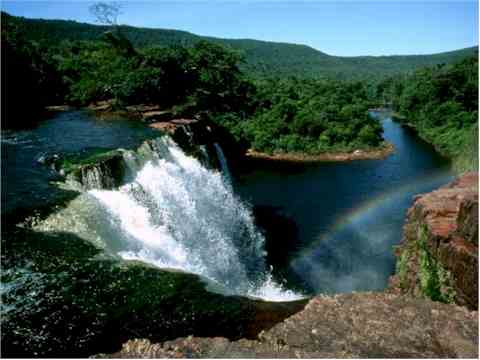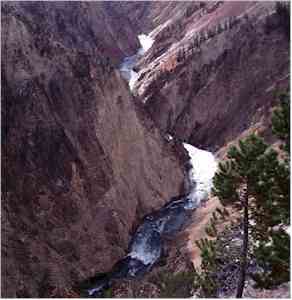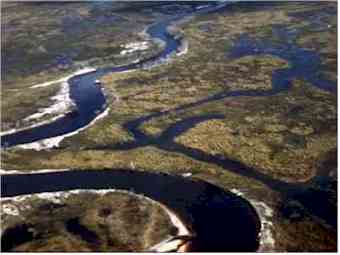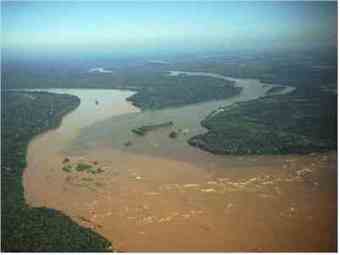|
![]()
| Nearly all rivers have an upper, middle, and lower course. The upper course begins in the hills. Here the river is smaller and usually has a rapid, tumbling flow that cuts a narrow channel through rocky hills or mountains. It may roll large boulders along in its swift current. |
|
|
|
|
The river can create waterfalls where it carves out layers of soft rock and leaves a cliff of hard rock standing. It forms rapids along sloping rocky beds. |
|
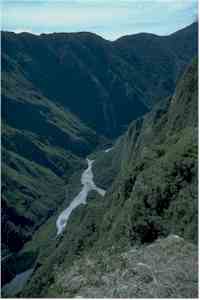 |
Over thousands or millions of years the river erodes, or wears away, soil and rocks and carves a canyon or a deep, V-shaped valley. |
|
![]()
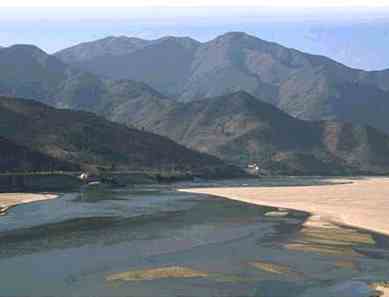 |
When the river descends to lower
levels, it runs more slowly over the gently sloping land of its middle course. Its current no longer has the force to carry stones or gravel. This material drops to the riverbed, where it forms bars of sand or gravel or builds islands. |
![]()
| Everything is continually changing
shape as the river deposits or erodes material. Often the river will alter its course. River currents swing toward one bank or the other, gradually undercutting the banks and widening a V-shaped valley into a U shape. |
|
|
| As the river flows downstream it
reaches the still gentler slope of its lower course. It drops more of its load than it did upstream and begins to build up its bed instead of tearing it down . The valley has been eroded into a wide plain. The river swings in great S-shaped curves, forming loops called meanders. |
![]()
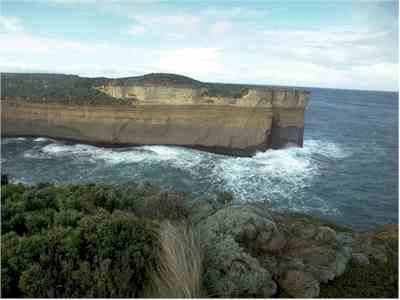 |
Eventually ... in 'old age' the river empties its load of water and 'material' into the sea. |
![]()


